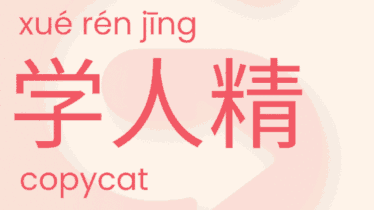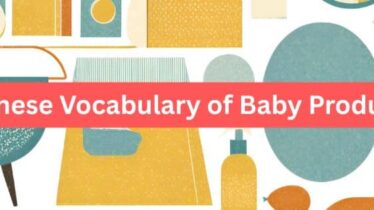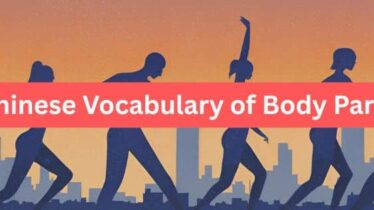Master 100+ Chinese Back to School Words
Guide Reading: Learn essential Chinese back to school vocabulary with pronunciation guides, cultural tips, and real classroom phrases. Perfect for students, parents, and teachers. Includes learning resources and research-backed learning strategies.
About the Author: This guide is written by the GoEast Mandarin teaching team, drawing from 12+ years of classroom experience teaching over 20,000 students. Our methodology aligns with HSK curriculum standards and incorporates research-backed language learning strategies.
Starting a new school year in a Chinese-speaking environment? Whether you’re preparing for study abroad in China, supporting your child’s bilingual education, or teaching Chinese language classes, mastering school vocabulary is your foundation for academic success.
Here’s what most vocabulary guides miss: knowing isolated words won’t help you navigate real classroom situations. You need context, cultural understanding, and confidence to use these terms naturally.
Why School Vocabulary Matters: The Research Evidence
Statistics from the Ministry of Education of China in 2020 show that over the past five years, a total of 40 million students have taken the Chinese Language Proficiency Test (HSK) and other Chinese tests. This massive scale demonstrates the global importance of structured Chinese vocabulary learning.
Source: Investigating the Washback of the Chinese Language Proficiency Test (HSK): From the Perspective of CSL Students – Fuyu Kong, Yanli Zhang, 2024
Research on Chinese language learning shows that vocabulary acquisition significantly impacts overall language proficiency. A study involving 215 Vietnamese university students found that vocabulary knowledge comprises depth and breadth, which are regarded as important indicators of second language (L2) learning capability.
Source: Vocabulary Learning in Chinese as a Second Language: Exploring the Role of Self-Regulation in Facilitating Vocabulary Knowledge of Second Language Learners – PMC
At GoEast Mandarin, we’ve observed similar patterns in our classrooms. Students who systematically build school vocabulary show greater confidence in academic discussions and classroom participation.
Essential Bacl to School Terms You Actually Need
This vocabulary selection is based on analysis of Chinese educational curricula and classroom observation studies. Research examining Chinese as a Foreign Language (CFL) over three decades shows that 72% of studies focused on university level or adult learners, with systematic vocabulary building being crucial for academic success.
Source: Enhancing language skills and student engagement: investigating the impact of Quizlet in teaching Chinese as a foreign language | Language Testing in Asia | Full Text
Core Chinese Back to School Vocabulary
| Chinese | Pinyin | English | Usage Context |
|---|---|---|---|
| 学校 | xuéxiào | school | Universal term for all school types |
| 老师 | lǎoshī | teacher | Always used with respect – never first names |
| 学生 | xuésheng | student | Formal term for learner |
| 同学 | tóngxué | classmate | Also used as polite address to peers |
| 教室 | jiàoshì | classroom | Physical learning space |
| 课 | kè | class/lesson | Building block of school vocabulary |
| 课程 | kèchéng | curriculum/course | Formal academic programs |
| 作业 | zuòyè | homework | Daily assignments |
| 考试 | kǎoshì | exam/test | Formal assessments |
| 成绩 | chéngjì | grades/results | Academic performance |
| 书 | shū | book | General term for books |
| 课本 | kèběn | textbook | Official course materials |
| 本子 | běnzi | notebook | For taking notes |
| 笔 | bǐ | pen | Writing instrument |
| 铅笔 | qiānbǐ | pencil | For sketching and drafts |
| 橡皮 | xiàngpí | eraser | For corrections |
| 黑板 | hēibǎn | blackboard | Traditional classroom board |
| 白板 | báibǎn | whiteboard | Modern classroom board |
| 桌子 | zhuōzi | desk/table | Student workspace |
| 椅子 | yǐzi | chair | Classroom seating |
| 图书馆 | túshūguǎn | library | Study and research space |
| 食堂 | shítáng | cafeteria | School dining hall |
| 操场 | cāochǎng | playground | Sports and exercise area |
| 办公室 | bàngōngshì | office | Teacher’s workplace |
| 宿舍 | sùshè | dormitory | Student housing |
| 年级 | niánjí | grade level | Academic year classification |
| 班级 | bānjí | class (group) | Student cohort |
| 课表 | kèbiǎo | class schedule | Timetable of classes |
| 时间表 | shíjiānbiǎo | timetable | General schedule |
| 下课 | xiàkè | class dismissed | End of class period |
| 上课 | shàngkè | attend class | Go to class/class begins |
| 课间 | kèjiān | break time | Time between classes |
| 放学 | fàngxué | school dismissed | End of school day |
| 开学 | kāixué | school starts | Beginning of term |
| 放假 | fàngjià | holiday/vacation | Time off from school |
| 学期 | xuéqī | semester/term | Academic period |
| 学年 | xuénián | academic year | Full year of study |
| 学习 | xuéxí | study/learn | General learning process |
| 复习 | fùxí | review | Study previously learned material |
| 预习 | yùxí | preview | Prepare for upcoming lessons |
| 练习 | liànxí | practice/exercise | Skill-building activities |
| 问题 | wèntí | question/problem | Things to ask or solve |
| 答案 | dá’àn | answer | Solution to questions |
| 迟到 | chídào | late | Arriving after scheduled time |
| 早退 | zǎotuì | leave early | Departing before scheduled time |
| 请假 | qǐngjià | ask for leave | Request time off |
| 缺席 | quēxí | absent | Not present at class |
| 出席 | chūxí | attend/present | Being present in class |
Key Cultural Insight: The word 课 (kè) appears everywhere in Chinese schools. It’s not just “class” – it’s the building block of academic life. You’ll hear:
- 上课 (shàng kè) – class begins
- 下课 (xià kè) – class ends
- 课本 (kèběn) – textbook
- 课表 (kèbiǎo) – class schedule
Classroom Phrases That Actually Matter
Research on classroom interaction reveals the importance of specific phrases for student engagement. Studies show that students’ passive role in classroom interaction demonstrates the need for teachers to adopt more proactive methods to spark students’ enthusiasm for participation.
Essential Survival Phrases
When you’re confused:
- 老师,我不懂这个。(Lǎoshī, wǒ bù dǒng zhège.) – Teacher, I don’t understand this.
- 请您再说一次,好吗?(Qǐng nín zài shuō yí cì, hǎo ma?) – Could you please say that again?
When you need help:
- 我可以问一个问题吗?(Wǒ kěyǐ wèn yí gè wèntí ma?) – May I ask a question?
- 这个字怎么写?(Zhège zì zěnme xiě?) – How do you write this character?
When you’re late or unprepared:
- 对不起,我迟到了。(Duìbuqǐ, wǒ chídào le.) – Sorry, I’m late.
- 我忘记带作业了。(Wǒ wàngjì dài zuòyè le.) – I forgot to bring my homework.
GoEast Teaching Tip: Research shows that students are reluctant to raise questions proactively, fearing that their queries might be ridiculed by peers. Practice these phrases until they become automatic to overcome this hesitation.
School Subjects: Regional Variations Matter
Different educational systems emphasize different subjects. Here’s comprehensive coverage based on curricula from mainland China, Taiwan (China), and Singapore:
Core Academic Subjects
| Subject | Mainland China | Taiwan(China) | Singapore |
|---|---|---|---|
| Mathematics | 数学 (shùxué) | 数学 (shùxué) | 数学 (shùxué) |
| Chinese Language | 语文 (yǔwén) | 国文 (guówén) | 华文 (huáwén) |
| English | 英语 (yīngyǔ) | 英文 (yīngwén) | 英文 (yīngwén) |
Science and Laboratory Vocabulary
For students entering Chinese science programs, these terms are crucial:
Basic Science Terms:
- 科学 (kēxué) – science
- 实验 (shíyàn) – experiment
- 实验室 (shíyàn shì) – laboratory
- 化学 (huàxué) – chemistry
- 物理 (wùlǐ) – physics
- 生物 (shēngwù) – biology
Test Your Knowledge: Interactive Back to School Vocabulary Quiz
Quiz Question 1: Your teacher just asked you to turn to page 50, but you can’t find your textbook. How do you politely tell them?
A) 我没有书 (wǒ méiyǒu shū) B) 老师,我忘记带课本了 (lǎoshī, wǒ wàngjì dài kèběn le)
C) 书在哪里?(shū zài nǎlǐ?)
Answer: B – This is polite, takes responsibility, and uses the formal term 课本 for textbook.
Quiz Question 2: You want to ask when the math exam is. Which is most appropriate?
A) 数学考试什么时候?(shùxué kǎoshì shénme shíhou?) B) 什么时候数学考试?(shénme shíhou shùxué kǎoshì?) C) 请问数学考试是什么时候?(qǐngwèn shùxué kǎoshì shì shénme shíhou?)
Answer: C – Adding 请问 makes it more polite, and the sentence structure is more natural.
Cultural Context: How Chinese Schools Really Work
Understanding vocabulary means understanding the culture behind it. Research shows that Chinese students are concerned with “losing face” and the fear of being teased by their peers in a collectivist culture.
Source: Exploring Chinese university students’ foreign language enjoyment, engagement and willingness to communicate in EFL speaking classes | Humanities and Social Sciences Communications
The Respect Hierarchy
Chinese educational culture emphasizes respect through language:
Teacher Relationships: You’ll never call teachers by their first names. It’s always 王老师 (Wáng lǎoshī – Teacher Wang) or simply 老师 (lǎoshī).
Peer Interactions: The term 同学 (tóngxué) literally means “same study” and reflects the collective learning approach valued in Chinese education.
Effort Over Ability: Chinese schools emphasize 努力 (nǔlì – effort) and 进步 (jìnbù – progress). You’ll hear these words constantly in feedback and encouragement.
Modern Classroom Technology
Today’s Chinese classrooms integrate technology extensively:
Digital Learning:
- 在线学习 (zàixiàn xuéxí) – online learning
- 网课 (wǎngkè) – internet classes
- 电子作业 (diànzǐ zuòyè) – digital homework
- 学习平台 (xuéxí píngtái) – learning platform
7 Common Mistakes Even Advanced Students Make
Based on classroom observations and research findings:
1. Measure Word Confusion
- Wrong: 一课 (yí kè)
- Right: 一节课 (yì jié kè) for “one class period”
2. Mixing Up Similar Sounds
- 考试 (kǎoshì – exam) vs. 老师 (lǎoshī – teacher)
- Practice tip: 考试 has high-falling tones (sounds urgent), 老师 has low-high tones (sounds respectful)
3. Using Wrong Formality Levels
- Too casual: 我要问问题 (wǒ yào wèn wèntí)
- Better: 我可以问个问题吗?(wǒ kěyǐ wèn gè wèntí ma?)
4. Regional Variations
- Don’t assume all Chinese schools use the same terms
- 中文/华文/国文 all mean “Chinese language class” but usage varies by region
Research-Based Learning Strategies That Work
Evidence from Multiple Studies
Research on 60 international students studying Chinese found that digital tools like Quizlet enhanced Chinese listening, speaking, and reading skills, promoting student engagement through behavioral, emotional, and cognitive dimensions.
Source: On Chinese learning strategies of learners from Central Asian countries: an analysis of gender, age, and learning duration effects – PMC
A study on Seamless Chinese Vocabulary Learning (SCVL) among 32 international students found that contextual, meaningful learning activities are essential for fostering vocabulary retention and application.
Source: Knowledge building and vocabulary growth: Assessing the impact of seamless Chinese vocabulary learning for international students | PLOS One
The GoEast 3-Step Method
Based on research evidence and classroom testing:
Step 1: Context First (Week 1) Don’t memorize isolated words. Learn phrases in realistic scenarios:
- Instead of just 书 (shū), learn 我忘记带书了 (wǒ wàngjì dài shū le)
Step 2: Active Usage (Week 2-3) Research shows that heightened levels of behavioral engagement within the classroom contribute to improved academic performance and cognitive development while promoting emotional well-being of learners. Practice with native speakers in real conversations.
(PDF) Facilitating learners’ participation through classroom translanguaging: comparing a translanguaging classroom and a monolingual classroom in Chinese language teaching
Step 3: Cultural Integration (Week 4+) Understand not just what words mean, but when and how to use them appropriately in Chinese educational settings.
Technology Integration Tips
Study Schedule for Busy Students:
- 10 minutes daily vocabulary review
- 20 minutes weekly conversation practice
- Monthly cultural context deep-dive
HSK Test Preparation Context
Statistical data show significant disparity in pass rates across HSK levels globally: HSK levels 1 and 2 have a pass rate of over 90%, while HSK level 3 has a pass rate of around 85%. School vocabulary forms the foundation for these standardized assessments.
Research involving 1,616 Chinese as Second Language students from 25 different mother tongues found that the HSK had both positive and negative effects on learning, with positive effects including providing learning goals and improving overall Chinese proficiency.
Frequently Asked Questions
How long does it take to master Chinese school vocabulary? Based on research patterns and our student data, most learners master essential school vocabulary (50-70 words) in 3-4 weeks with daily practice. However, feeling confident using these terms naturally in classroom conversations typically takes 2-3 months of active use with native speakers.
Should I focus on simplified or traditional characters? This depends entirely on your learning context:
- Mainland China: Simplified characters only
- Taiwan (China): Traditional characters only
- Singapore: Primarily simplified, some traditional
- Hong Kong (China): Mixed usage, traditional more common
What’s the most crucial phrase for new students? 我不懂,请您帮助我 (wǒ bù dǒng, qǐng nín bāngzhù wǒ) – “I don’t understand, please help me.” It’s polite, clear, and opens the door for assistance.
How do I remember tones for school vocabulary? Create memorable associations:
- 老师 (lǎoshī) – falling-rising tones sound like questioning (perfect for someone you ask questions)
- 学生 (xuésheng) – rising-neutral tones sound like introducing yourself
Are there different classroom etiquette rules I should know? Yes! Key differences from Western classrooms:
- Always stand when greeting the teacher
- Use both hands when giving papers to teachers
- Group harmony valued over individual participation
- Silence during lessons shows respect, not disengagement
Your Next Steps to Classroom Confidence
Mastering Chinese school vocabulary isn’t about perfection – it’s about confidence to participate fully in your educational journey.
Research analysis of 122 empirical studies on Chinese language pedagogy shows that 86% were conducted in university settings, highlighting the importance of systematic vocabulary preparation for academic success.
Regular practice with qualified native speakers makes the difference between knowing vocabulary and using it naturally. At GoEast Mandarin, our blended learning approach combines systematic vocabulary building with immediate opportunities for real classroom conversation practice.
Our certified Chinese teachers understand exactly what international students need to succeed in Chinese educational environments – because they’ve guided thousands of students through this same journey over 12+ years.
Ready to Put Your School Vocabulary Into Practice?
The best way to master Chinese school vocabulary isn’t just memorizing lists—it’s using these words in real conversations with native speakers. That’s exactly what you’ll experience in our free trial lesson. During this personalized 30-minute session, you’ll practice essential school phrases with one of our certified Chinese teachers, get immediate feedback on your pronunciation, and discover how our blended learning approach can accelerate your progress.
Our teachers will assess your current level and show you exactly which vocabulary gaps might be holding you back in academic settings. Best of all, there’s no commitment required. Book your free trial lesson now and start speaking Chinese with confidence in just one session. Over 20,000 students have already discovered the GoEast difference—isn’t it time you experienced it yourself?
About GoEast Mandarin: Established in 2012, GoEast Mandarin has taught over 20,000 international students. Our blended learning methodology combines self-study materials with live conversation practice, specifically designed for students entering Chinese academic environments. All content is developed by certified Chinese teachers with extensive classroom experience.
Methodology and Sources: This vocabulary guide incorporates research from peer-reviewed studies on Chinese language acquisition, HSK test performance data, and classroom interaction research. Our selection methodology is based on analysis of Chinese educational curricula and observation studies conducted in real classroom settings.
Transparency Note: This educational content is created by GoEast Mandarin’s teaching team. All research sources are properly cited. Some content may direct to our course materials, clearly identified as such




